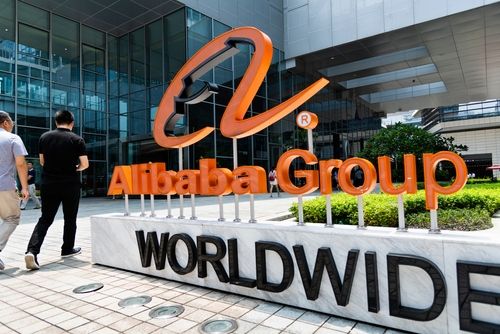3 Key Numbers From Alibaba’s Q2 FY2025 Earnings


TradingKey - With China’s tech giants reporting in the past week, investors were closely watching earnings to see whether their results could indicate that the Chinese consumer was bouncing back.
That was particularly true for e-commerce stocks, which are much more intricately linked to the health of the Chinese consumer. Thankfully for investors, they got a chance to take a look at the results from one of the biggest e-commerce companies in China; Alibaba Group Holding Ltd (NYSE: BABA) (HKEX: 9988).
Alibaba has experienced sub-par growth since China’s economy emerged out of the Covid-19 pandemic and investors have been waiting for some good news from the “OG” of China’s e-commerce scene.
The company reported its Q2 FY2025 results (for the three months ending 30 September 2024) last Friday (15 November) before the US market opened. Here are three big numbers that investors should be aware of.
1.Overall revenue growth of 5%
Most investors were focused on the top line growth of Alibaba’s business going into the earnings release and, unfortunately, it disappointed. The company saw revenue of RMB 236.5 billion (US$32.7 billion) for the period, up just 5% year-on-year.
The main drag was the continued weakness in its core, domestic e-commerce business – that consists of Taobao, Tmall, and others – that posted revenue growth of just 1% for the period.
Again, it was Alibaba’s international e-commerce unit (which houses Southeast Asia-focused Lazada and B2C platform AliExpress) that outperformed and notched up impressive 35% year-on-year revenue growth.
While net income shot up 58% year-on-year to RMB 43.9 billion, outpacing consensus expectations, that was mainly down to large, one-time gains in its equity investments.
2.Cloud revenue growth of 7%
Alibaba’s cloud unit has gone through tough times in recent years with slowing revenue growth and increasing competition from state-backed competitors.
However, in its latest quarter, the cloud unit turned out to be a bright spot as it delivered 7% year-on-year sales growth – a slight acceleration from the prior quarter’s 6% growth – and notching up revenue of RMB 29.6 billion.
This was driven by double-digit public cloud revenue growth and suggests the company’s cloud business could be gaining back some market share in the space.
Alibaba Cloud’s Artificial Intelligence (AI) related product revenue also grew fast, racking up triple-digit year-on-year revenue gains for the fifth consecutive quarter.
3.Share buybacks of US$4.1 billion
As a more mature Chinese tech company, capital allocation was also on the minds of many Alibaba investors. Alibaba management revealed that during the reported quarter, the company repurchased a total of 414 million ordinary shares for a total of US$4.1 billion.
This was made in both the US and Hong Kong markets under its share purchase programme and following the latest period’s repurchases, the company still has an estimated US$22 billion left to repurchase from its current share repurchase plan, which is effective until March 2027.
Over the three-month period, Alibaba managed to record a net decrease of 405 million ordinary shares (after taking into account stock-based compensation), resulting in a 2.1% net reduction of its outstanding shares.
Consumer outlook still uncertain
While Alibaba did have a decent quarter, the consumer outlook in China is still highly uncertain. Investors are also still awaiting to see how the government’s recent RMB 10 trillion package plays out. There were some positive retail sales data out in October, with sales rising 4.8% year-on-year, but many investors still feel it’s still too early to say there’s a rebound.
Furthermore, Alibaba continues to face intense competition in the e-commerce retail space from the likes of JD.com Inc (NASDAQ: JD) (HKEX: 9618) and PDD Holdings Inc (NASDAQ: PDD).
Indeed, Alibaba shares fell 2.2% in New York trading on Friday after its earnings release but the company’s shares are up 18.5% so far in 2024.







